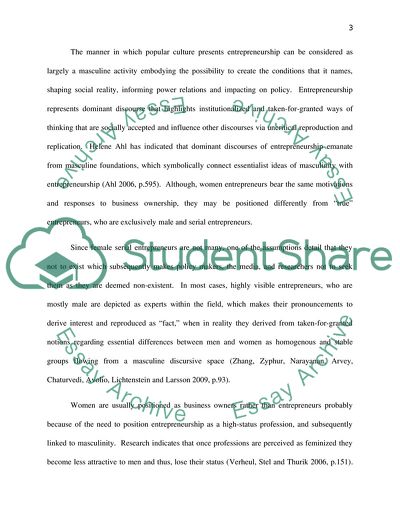Cite this document
(Gender Dilemma in Entrepreneurship Term Paper Example | Topics and Well Written Essays - 2750 words, n.d.)
Gender Dilemma in Entrepreneurship Term Paper Example | Topics and Well Written Essays - 2750 words. https://studentshare.org/gender-sexual-studies/1798189-to-what-extent-could-it-be-argued-that-entrepreneurship-is-gendered
Gender Dilemma in Entrepreneurship Term Paper Example | Topics and Well Written Essays - 2750 words. https://studentshare.org/gender-sexual-studies/1798189-to-what-extent-could-it-be-argued-that-entrepreneurship-is-gendered
(Gender Dilemma in Entrepreneurship Term Paper Example | Topics and Well Written Essays - 2750 Words)
Gender Dilemma in Entrepreneurship Term Paper Example | Topics and Well Written Essays - 2750 Words. https://studentshare.org/gender-sexual-studies/1798189-to-what-extent-could-it-be-argued-that-entrepreneurship-is-gendered.
Gender Dilemma in Entrepreneurship Term Paper Example | Topics and Well Written Essays - 2750 Words. https://studentshare.org/gender-sexual-studies/1798189-to-what-extent-could-it-be-argued-that-entrepreneurship-is-gendered.
“Gender Dilemma in Entrepreneurship Term Paper Example | Topics and Well Written Essays - 2750 Words”. https://studentshare.org/gender-sexual-studies/1798189-to-what-extent-could-it-be-argued-that-entrepreneurship-is-gendered.


